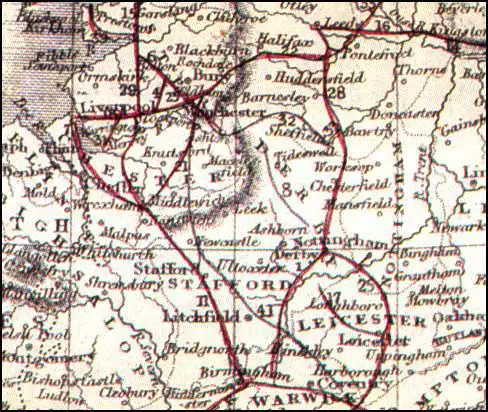Grand Junction
After the great success of the Liverpool & Manchester Railway, plans were made to build other railways. In 1833 the Grand Junction Railway was established. The plan was to link Birmingham to Liverpool & Manchester Railway at Newton Junction. The initial survey was carried out by John Rastrick.
The chairman of the Grand Junction Company was John Moss and he recruited George Stephenson and Joseph Locke as engineers. Joseph Locke had worked under George Stephenson at the Stockton & Darlington Railway and the Liverpool & Manchester Railway. Stephenson, who did not find it easy to share power with his former pupil and in 1835 decided to leave the project.
The Grand Junction Railway was over eighty-two miles long and linked Birmingham with the Liverpool & Manchester line. It passed through Wolverhampton, Stafford, Crewe and Warrington before reaching the Newton Junction. The line included 100 underbridges, 50 overbridges, 5 viaducts, 2 tunnels and 2 aqueducts. Joseph Locke used double-headed rails held in chairs mounted on wooden sleepers.
The railway was opened for passengers, parcels and light goods on 4th July, 1837 (heavy goods traffic had to wait until February, 1838). The Grand Junction was opened on 4th July 1837. Sixteen days later the London to Birmingham line was opened. This meant that the four major cities in England, London, Birmingham, Manchester and Liverpool were now all linked together by rail.
The Grand Junction had the problem that many of its passengers wanted to travel part of the way on the Liverpool & Manchester line. After negotiations it was agreed that the Grand Junction would pay tolls to the company for the passengers and parcels that it carried on its behalf.

Britain. This section shows the Grand Junction Railway.
